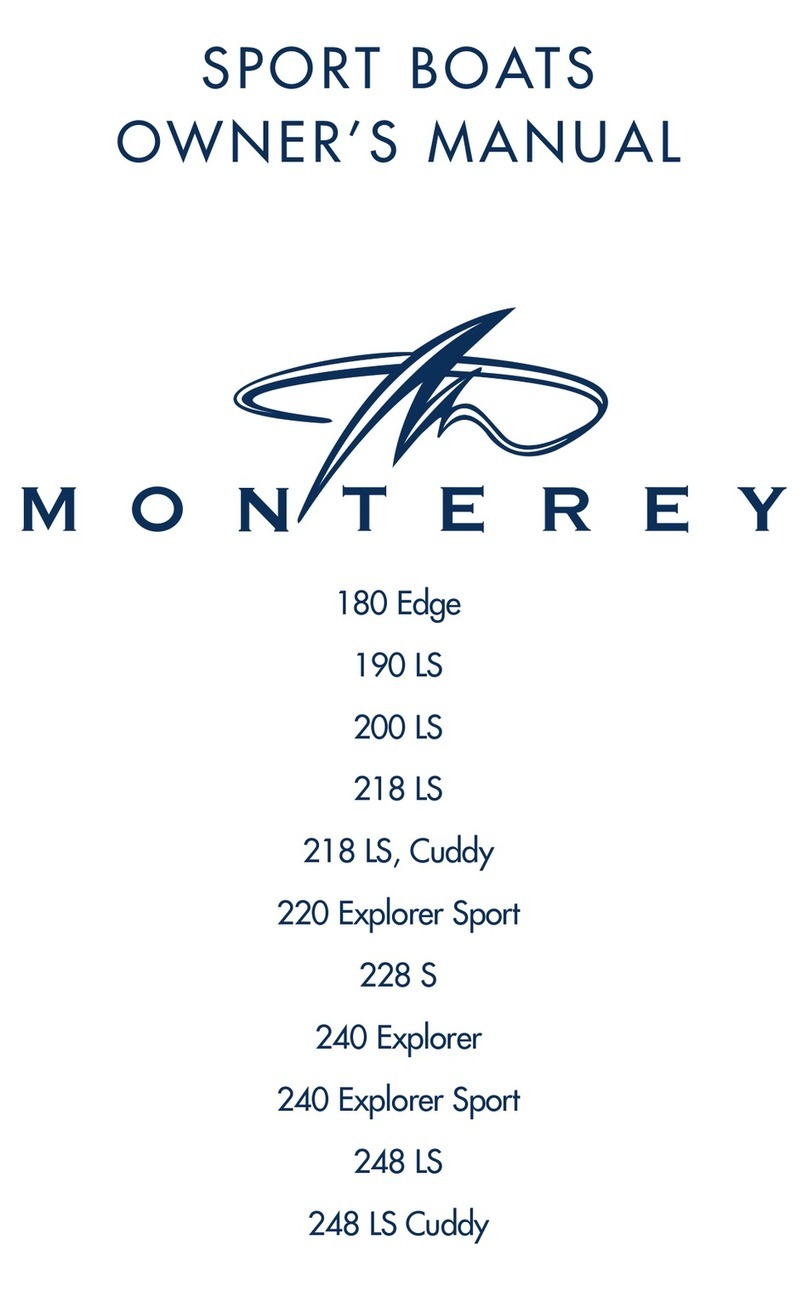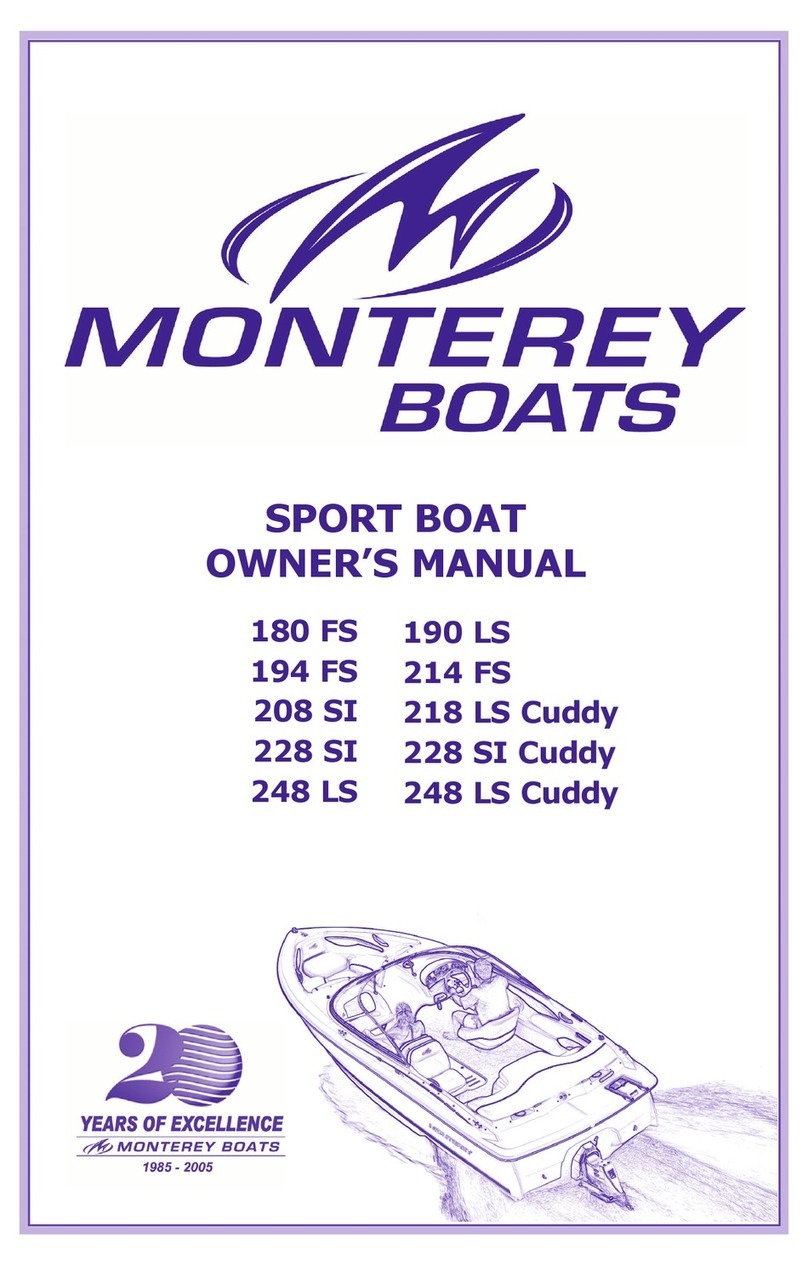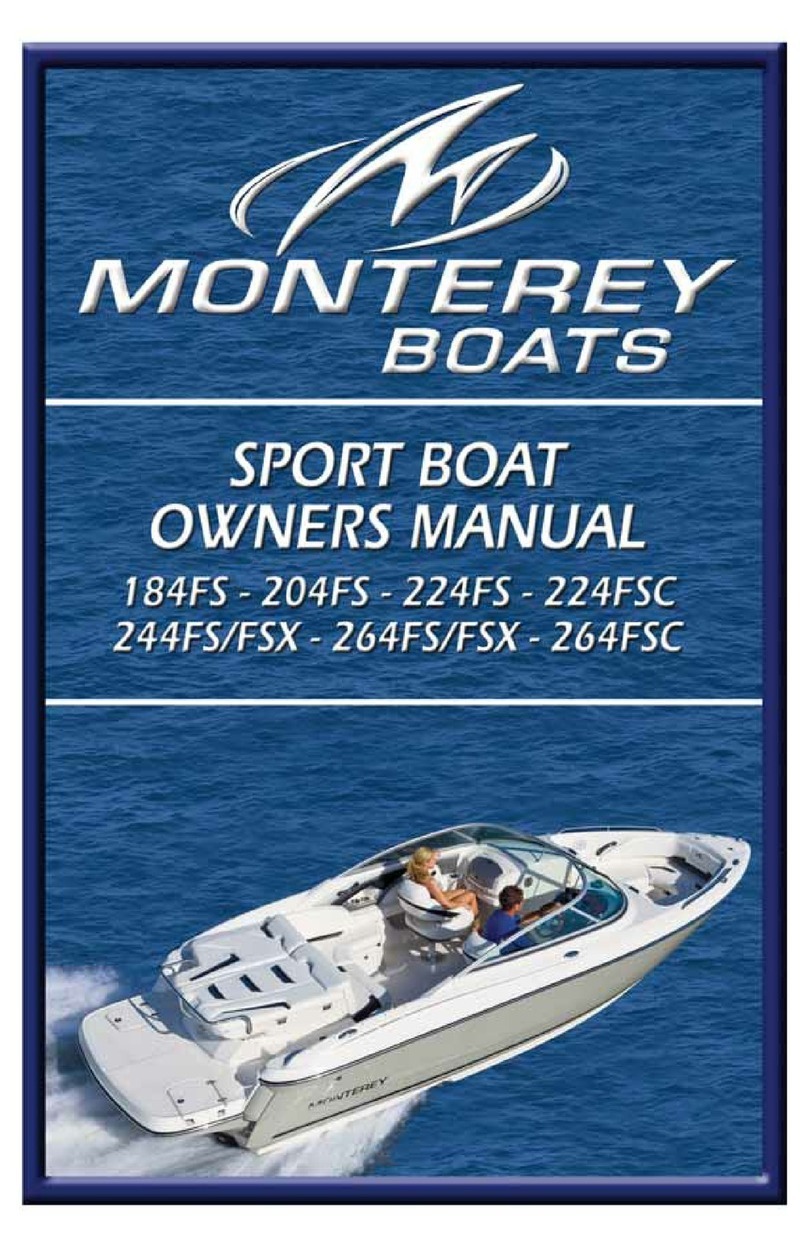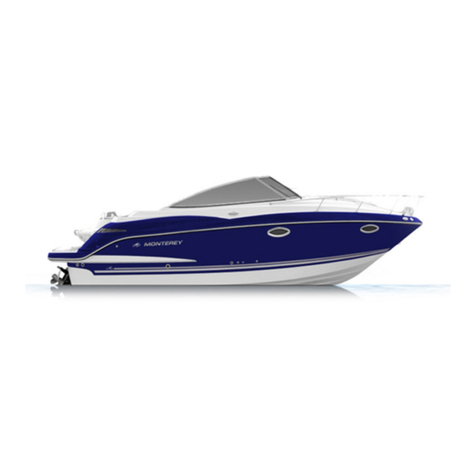orientation. Both the Pre-Delivery and Final
Distribution: Factory CS – Green, Dealer – Yellow, Owner – Manila Card Rev 1204
1579 S.W. 18
th
Street
Williston, FL 32696
Tel 352-529-9181
Fax 888-922-6287
www.montereyboats.com
Boat Number (HIN):
RGF
Boat Model:
Selling Dealer: Dealer Code:
Engine Brand: Engine Model:
Engine Serial #1: Drive Serial #1:
Engine Serial #2: Drive Serial #2:
Date of Sale: :etaDtratSytnarraW
:)tsriF,tsaL(emaNrenwO
:sserddA
City: State: Zip:
E-Mail Address: (We respect your privacy and will use for internal puposes only.)
Phone: 2nd Phone:
PLEASE, INSPECT AND CHECK OFF THE FOLLOWING OPERATIONS
Indicate Status with the following Key: √ or 1 – OK, 2 – Needs Correction, 3- Completed, N/A – Not Applicable
BOAT
Boat gel coat, striping & graphics
Upholstery fit, clean and free of defects
Sundeck/Sun Island/lounger operation
Canvas fit, clean and free of defects
Cabin Doors, port lights, hatches, cabinet & head doors, latches
All thru-hull fittings, ball valves, head drain, galley drain, anchor
well drain, drain plug-hull, wet bar drain are secure, no leaks
Windshield fit
Ladders
EQUIPMENT
Running Lights (Navigation)
Cabin lights, cockpit lights
Toilet (Head) operation & hoses
Stereo – Radio, CD, remote control
Bilge Pumps – Auto float switch
Air Conditioner/Heater – operation & components secure
Water pressure system (let pressure stand 15 minutes to see if
pump goes on) & heater
Stove, coffee maker, oven, refrigerator, ice maker
Generator – Operation & components secure
Bilge Blower(s)
Wipers
Shore power (AC)
Tables
Plumbing Hose Clamps
Battery – Polarity, Voltage, Tight Connections
Battery Switch(es) - Operation
ENGINE – BEFORE STARTING
Engine mounts – tight
Fuel system operation - no leaks
Engine compartment components not missing, disconnected,
loose, kinked, pinched or could chafe
Hose clamps on engine & exhaust
Steering system operation, components secure, steering wheel
straight
Drains cooling system closed (Closed cooling coolant level)
Throttle control, operation & adjustment
Shifter control, operation & adjustment
Stern drive oil level at full mark
Crankcase & power steering oil levels at full mark
Stern drive trim operation
Prop Size:
Prop installed correctly with grease, nut(s), cotter pins
Prop rotation – Forward & Reverse
Neutral start switch, engine will not start in gear
Transom plate seal has no leaks – water, oil
ENGINE - AFTER STARTING: (in water)
Oil pressure
Fuel line connectors – no leaks
Engine has no water or oil leaks
Idle speed per engine specs, in gear
Ignition timing check with timing light or scan tool
Gear shift works properly - forward, neutral, reverse
Instruments read correctly
Exhaust system - no leaks
SEA TRIAL
Boat performance
Port engine operation
Starboard engine operation
Steering –operation
Stern drive trim operation
Instruments register normal
Maximum R.P.M.
Technical Check Performed by
etaDnaicinhceT
PRE-DELIVERY FINAL CHECK
All accessory equipment operates (Mech. & Elect.)
Carpets, curtains, cushions & canvas installed
All boat, engine and accessory literature
Boat properly cleaned, interior and exterior
Trailer wiring, wheels, fenders & brakes
OWNER ORIENTATION
Review & familiarize Owner with operation of all features
and options on boat
Sea Trial with Owner
Review of Owners Manual
Review of Warranties
Review of Owner Responsibilities
Review of Service & Maintenance Procedures
Review of Care & Cleaning
Owner Orientation Performed by
etaDlennosrePrelaeD
COMMENTS I have read and agree with the checklist. I have read and
understand the Monterey Boats Lifetime Limited Warranty
as it appears on the back of this form.
etaDerutangiSrenwO
WARRANTY REGISTRATION AND NEW BOAT CHECKLIST
SUPER SPORT & CRUISER
SAMPLE




































